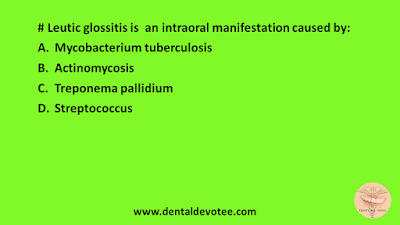21st MAR 2014
Time - 2 Hours
B.P. Koirala Institute of Health Sciences, Dharan, Nepal
1st year BDS
Internal Assessment Examination, March 2014
Paper - II A
(GENETICS, GROWTH AND DEVELOPMENT, IMMUNOLOGY & BLOOD)
Time - 2 Hours
Total Marks: 125
SHORT ANSWER QUESTIONS
SECTION - 'A'
ANATOMY
1. Classify chromosomal disorders with examples of each. 5
2. Draw a labeled histological diagram of lymph node. 5
3. Write the criteria and examples of X-linked recessive disorder. 5
SECTION - 'B'
PHYSIOLOGY
2. Draw a labeled histological diagram of lymph node. 5
3. Write the criteria and examples of X-linked recessive disorder. 5
SECTION - 'B'
PHYSIOLOGY
4. State Landsteiner's law. Explain Rh and ABO blood group on the basis of this law. 2+2=4
5. With the help of flow diagram, explain the extrinsic pathway in blood coagulation. 4
6. Explain the role of erythropoietin in red blood cells production. 4
7. Draw the general, somatic and neural growth curves and briefly compare their patterns. 4
8. Explain the role of cytotoxic T cell in cellular immunity. 4
6. Explain the role of erythropoietin in red blood cells production. 4
7. Draw the general, somatic and neural growth curves and briefly compare their patterns. 4
8. Explain the role of cytotoxic T cell in cellular immunity. 4
SECTION 'C'
BIOCHEMISTRY
9. Define the terms isotypes, idiotypes and allotypes. Draw a labeled diagram of immunoglobulin. 3+2=5
10. Write similarities and differences between the processes of DNA and RNA synthesis. 5
11. Enumerate different post-translational modifications of polypeptide chain. Explain the function of chaperones. 3+2=5
12. Describe the mechanism of gene regulation with the help of lac operon model. 5
13. Explain how polymerase chain reaction (PCR) helps to amplify a target sequence of DNA. 5
14. Explain with a diagram mechanism of iron absorption in the intestine. 5
10. Write similarities and differences between the processes of DNA and RNA synthesis. 5
11. Enumerate different post-translational modifications of polypeptide chain. Explain the function of chaperones. 3+2=5
12. Describe the mechanism of gene regulation with the help of lac operon model. 5
13. Explain how polymerase chain reaction (PCR) helps to amplify a target sequence of DNA. 5
14. Explain with a diagram mechanism of iron absorption in the intestine. 5
SECTION 'D'
PATHOLOGY
15. Enumerate the types of Hypersensitivity reactions. Give at least two examples for each. Write briefly about type II hypersensitivity reaction. 2+1+2=5
16. Enumerate the types of blood components. What are the immediate and delayed blood transfusion reactions. 2+4 =6
17. Describe the peripheral smear and bone marrow findings of Megaloblastic anemia. 5+3=8
18. Enumerate six differences between AML and ALL. 6
19. Classify Hemolytic Anaemia. 5
SECTION 'E'
MICROBIOLOGY
20. Draw a labeled diagram of HIV. 5
21. Write short note on innate immunity. 5
22. List the fungi causing opportunistic infection. Add a note on approach to lab diagnosis of any one of them. 2+3=5
SECTION 'F'
PHARMACOLOGY
23. Explain warfarin effect in pregnancy. 5
24. Explain Cyclophosphamide effect in urinary bladder. 5
25. Explain Cyclosporine effect in kidney. 5
***








